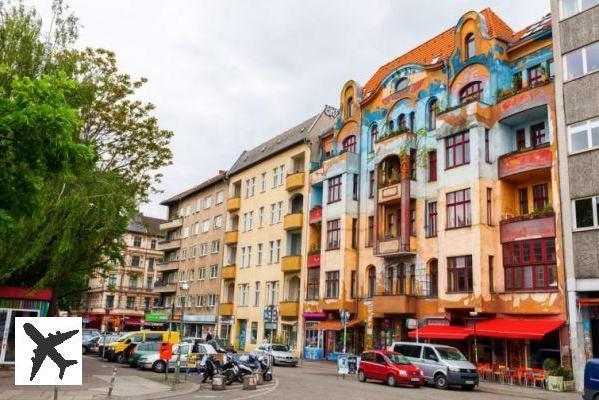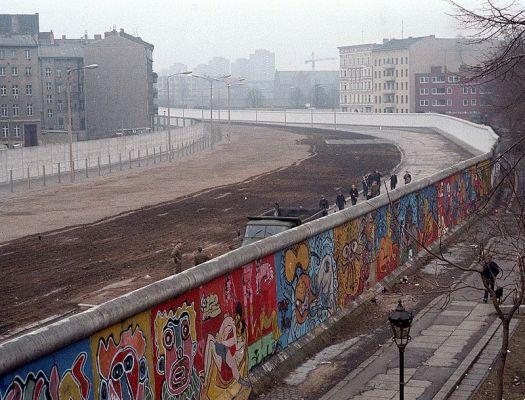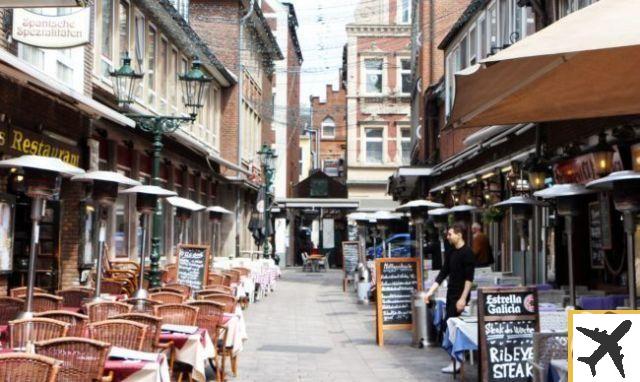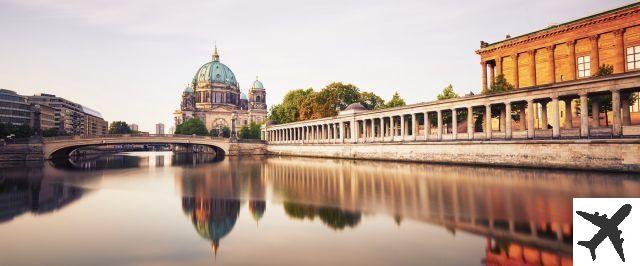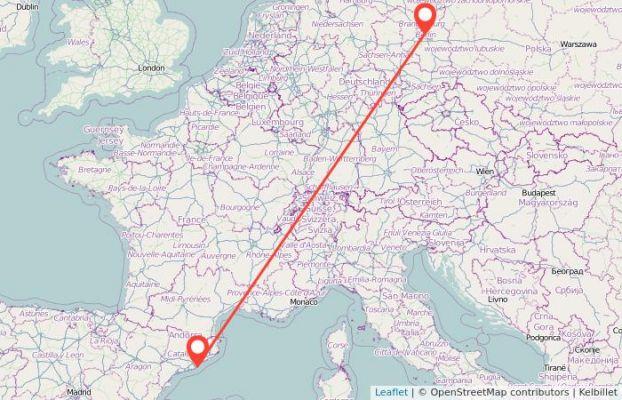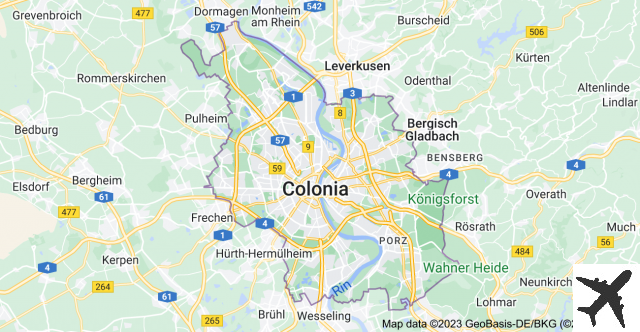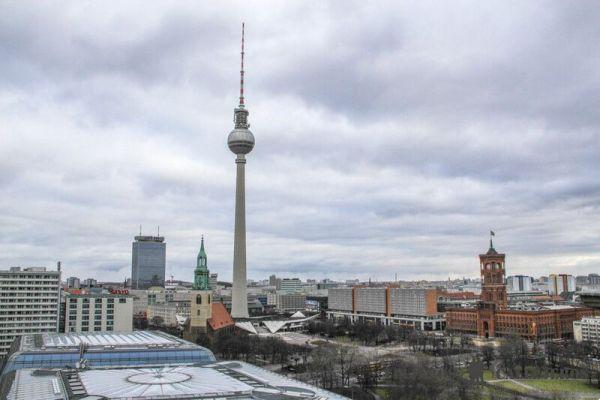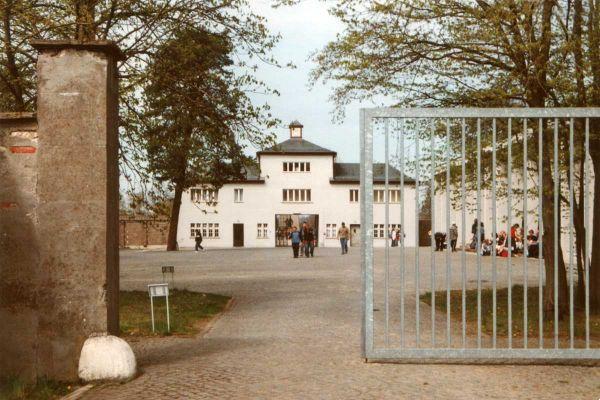The efficiency and timeliness of public transport in Germany are known worldwide. In addition, public transport in the country is subsidized, offering a democratic system, with quality and affordable price.
How public transport works in Germany
It is essential to clarify some facts about the functioning of public transport in Germany for those who intend to live in the country, or even travel here.
Punctuality
In general, public transport in Germany is quite punctual, be it by bus, metro, tram or train. Of course there are exceptions and delays occasionally occur, usually caused by work on the tracks or accidents.
The funny thing is that Germans are extremely irritated by delays, no matter how small.
However, over time, we become accustomed to the system's punctuality and come to rely on it to arrive on time for our appointments, such as going to work. For this reason, delays start to bother us too.
Real-time timetable information
Both on the platforms of the train and metro stations, as well as at the tram and bus stops, there are timetables that indicate when the vehicles are scheduled to pass. In most cases, there are also electronic panels that indicate the estimated time for the arrival of the next vehicle.
Another interesting curiosity about public transport in Germany is that in the country it is not necessary to “give a signal” or “give your hand” for the bus to stop.
Need to send money to another country?Send money safely, quickly and with the best exchange rate. We update the best entity daily, make your simulation now!
Quote Now → Need to send money to another country?
After testing the main alternatives on the market (Paypal, Western Union, Moneygram, etc.), the platform we recommend is Wise. It's safe, fast and easy to use.
View Quote →
Occupation
As for crowding, public transport systems in Germany have peak hours, always in the morning and late afternoon on weekdays. Also, after big events like football games, festivals and concerts, the system reaches full capacity.
However, occupancy is noticeably lower than capital oysters, since the frequency of services is higher and vehicles have greater capacity, managing to better meet demand.
Therefore, if your concern is to travel seated, you can rest assured. Most of the time this is possible, even at peak times.
Fee collection
In public transport systems in Germany there are no ticket collectors, roulette wheels or turnstiles. On the contrary, the passenger must purchase the ticket at an electronic terminal – or via an application – and validate it in small machines before or immediately after entering the vehicle.
On bus trips, the ticket can be purchased directly from the driver, who will already issue a valid ticket for that date. In regional trains and trams, there is usually a machine inside the vehicle from which the passenger has the possibility to purchase a ticket.
For the subway, it is necessary to purchase a ticket on the station platform, where the ticket must be validated before getting on the vehicle.
Ticket validation
Before getting on any means of public transport in Germany, it is very important to check whether the ticket still needs to be validated. Passages that need validation are indicated by arrows and phrases “Please validate here/ Please validate your ticket”. If in doubt, do not hesitate to ask an agent.
For those who purchase tickets by application, it is not necessary to physically validate them. Just select the route and show your cell phone with proof of purchase available in the app itself in case any tax appears during your trip.
Inspection
Although there are no turnstiles on public transport in Germany, it is very important that the rules are respected, or very high fines can be charged.
It is very common for controllers to enter vehicles, who are sometimes dressed in civilian clothes. The controllers request the presentation of tickets and, if the passenger does not have a valid ticket, he must pay a fine.
Currently, the fine charged is €60. Berlin controllers offer the possibility of paying the fine by means of a debit card (EC) or credit card. There are false inspectors and for this reason, it is not common to charge amounts in cash inside the train. You can always ask for identification in case this happens to you.
If you prefer to make the payment later, it is possible. In this way, a document will be issued requesting that the fine be paid in up to 14 days by bank transfer or at any of the customer service points in the city.
zoning
Some cities in Germany have their urban perimeter divided into zones. The capital Berlin, for example, is divided into zones A, B and C.
Zone C is a region further away from the center and where Berlin-Schönefeld Airport and the city of Potsdam are located. Therefore, as the fares are different for each fare zone, it is very important to know the zone in which your destination is located before purchasing a public transport ticket in Germany.
Main modes of public transport in German cities
Large German cities have a very complete public transport network. First, the metro network works as the backbone of the city, connecting the different regions to the center. In turn, suburban trains guarantee access to the most peripheral neighborhoods and to some surrounding cities.
The tram and bus complement the network, offering local access to the different districts of the municipality. In addition to these, there are also regional trains that connect different cities.

On the other hand, the smaller cities operate mainly on a bus system and are connected to each other through regional trains.
Key words for people using public transport in Germany
Learning German is not easy, but knowing a few words can help you get around.
In German the tram is called Straßenbahn, the subway is called U-Bahn and the suburban train is translated as S-Bahn. Therefore, if you are lost on the street or at the station and are looking for the subway, you should always follow the signs that indicate the letter U, always represented in blue. If you are looking for the suburban train, you must follow the signs that indicate the letter S, always represented in green.
The line numbers also follow this logic: the S lines, for example, are suburban train lines, and the U lines are subway lines. Knowing this, if someone says that to reach a certain destination you must take an S line, it is possible to infer that it is a place a little further from the center.
Therefore, it is worth checking if this place is within the central zone or if you need to pay an additional fee to complement your ticket.
Embarkation, disembarkation and station
Another important word for anyone planning to use public transport in Germany is Haltestelle. This word means boarding and disembarking point, stop, or bus stop. Such locations are always indicated by a sign containing the letter H. green with yellow background.
It is also worth learning the words Bahnhof and Hauptbahnhof, which mean, respectively, train station and main train station.
How much does it cost to use public transport in Germany?
First, it is important to clarify that the train system is almost always operated by the company Deutsche Bahn. Most of the time, a single company, which differs in each region of the country, operates the entire tram, bus and metro system.
In addition, the modes of transport are integrated and the tariff is unified. That way, when you buy a ticket, you you can use it in all modes of transport.
ticket types
There are different types of tickets for sale, to meet different needs. In most cities it is possible to find annual, monthly, weekly, daily or single tickets.
There are also individual or group tickets. For those who travel a short distance, of up to 5 stations, there are also short journey tickets.
Of course, for those who travel multiple times in a single day, it is always more advantageous to purchase a day ticket. On the other hand, those who use public transport in Germany on a daily basis should consider purchasing the monthly or annual ticket.
Single tickets are valid from the moment of validation and last for two hours. However, they must be used one-way, so they are not accepted for returning to the point of origin.
Public transport fares in Germany
Below we present the prices of public transport fares in Germany. As an example, we selected the three largest cities in the country: Berlin, Hamburg and Munich.
For this, we consider the tariffs for circulating in the main areas of each of the cities and the prices of individual tickets.
| modality | Berlin | Hamburg | Munich |
| short excerpt | €2,00 | €1,80 | €1,52 |
| Unitary | €3,00 | €3,50 | €3,50 |
| daily | €8,80 | €7,63 | €8,20 |
| Weekly | €36,00 | €30,00 | €20,20 |
| Monthly | €86,00 | €114,30 | €63,20 |
| Annual | €978 | €1.124,40 | €597,00 |
* Prices obtained in October 2022, taken from the websites of the operating companies BVG, MVV and HVV.
It is important to note that holders of weekly, monthly and annual tickets often have additional benefits, such as the possibility of taking an adult companion free of charge after a certain time and on weekends.
Discounts on public transport in Germany
Although there are special spaces reserved for seniors on buses and trains, there is no different price or fare exemption for seniors on public transport in Germany.
However, people with special needs are exempt from the public transport fare in Germany, as well as their companions.
Also, as a rule, children under six years old accompanied by an adult do not need a ticket to use public transport in Germany. Children between 6 and 14 years old pay a reduced price to use the system.
Public transport for students in Germany
For those studying in Germany, there are several specific tariff policies for using public transport in the country.
Elementary and high school
In Berlin, primary and secondary school students can travel for free in zones A and B. To do so, all you have to do is register and present your student ID.
Students can bring, at no additional cost, children under 6 years old, a dog and even a bicycle.
Children over 6 years of age who are not yet attending school can also apply for the benefit, and must present a document proving that they have already been accepted or allocated to a school in the city.
vocational education
There are also advantages for trainees to use public transport in Germany.
In Germany's capital, for example, students undertaking skilled trades training, vocational courses, or participants in voluntary organizations can purchase discounted tickets.
For these, the annual ticket costs only €365, a discount of more than 60% compared to the normal annual ticket. There is also the option of making a monthly ticket, for the cost of €58, approximately 30% less than the regular monthly fee.
Trainees tickets allow you to bring children up to 6 years old, a dog and a bicycle at no additional cost.
University education
Finally, the semester ticket for university students is a reality in all German cities. Every semester, university students must pay a tuition fee, which includes a contribution to the public transport system in Germany.
This registration fee is variable, with costs between €150 and €300. The contribution is mandatory, regardless of the student's use of public transport.
In many cases, students can travel for free not only in a municipality, but throughout the state's public transport network, including regional trains. This gives students a lot of flexibility and the possibility to travel a lot in the region.
As the tuition fee is low compared to what you would pay to use public transport normally, many people consider studying in Germany to be free.
€9 ticket in Germany
With the war between Ukraine and Russia directly affecting the increase in energy in Germany, the government decided to launch a package of measures to minimize the financial impacts on the population.
One was the implementation of the €9 monthly ticket valid for the entire country for three months – from June to August 2022. Tickets allowed you to use the entire public transport network in Germany, such as buses, cable cars, subways, urban trains and some regional trains, with the exception of long-distance trains.
The benefit was valid for both residents and tourists, which attracted countless people to different cities in the country, especially since it was implemented during the German summer/vacation period.

In the month that the ticket was implemented, I, Ana Carolina, had just moved to Germany, which was very convenient as it was the period for visits to rent apartments. This saved us a few good euros, as we use public transport quite often, much more than our current routine requires.
In my opinion, the only problem is that, as expected, public transport was much more crowded than usual. This added to the fact that they do not have air conditioning on the trains and the population is not very adept at deodorant.
Public transport safety in Germany
Generally speaking, public transport in Germany it's safe. Despite this, it is always important to be aware of your belongings when moving. As in most large cities in the world, petty thefts can be carried out by so-called pickpockets.
Furthermore, in Berlin there is a scheme of fake public transport ticket inspectors – as we mentioned above. Scammers use fake badges and claim the fine must be paid on time. To avoid falling for the scam, we always recommend checking that the badge shown by the inspector is real. Stay tuned!
However, in general, Germany is a safe country to live and travel.
German cities test free public transport
Currently, there are several movements that study making public transport in Germany free of charge. In November 2019, many German cities such as Hannover, Münster and Karlsruhe tested free public transport.
In Hannover, the test took place for just one day and the city provided additional vehicles in order to avoid overcrowding, in addition to a timetable with shorter intervals between departures. The objective of the action was to identify the behavior of potential users and the reaction of citizens to this type of offer.

The cities of Münster and Karlsruhe, meanwhile, offered free public transport on every Saturday between November and December. Other cities in the states of Baden-Württemberg and Bavaria are also participating in the movement.
Luxembourg was the first European country to announce the implementation of free public transport.
How to get around in Germany
Using public transport, it is recommended to travel in Germany by train or bus. As distances are relatively small, few people choose to travel by plane within the country.
It is worth remembering that some of these transports do not exactly fit the public transport category in Germany, such as high-speed trains and buses, which are operated by private companies.
Train
The German railway company is Deutsche Bahn. The train is a comfortable and pleasant alternative to travel in the country, as the railway network is extensive and the system is very punctual. There are different types of trains to travel in the country.
Regional Trains
Regional trains run routes that serve small and medium-sized municipalities. If you are going to use regional trains to travel in Germany, a tip is to buy a specific ticket that allows you to travel unlimitedly for one day.
There is an option that covers the entire German territory and another in which the state must be selected (Quer-durchs-Land-Ticket and Länder-Tickets, respectively). This ticket is also ideal for group travel as the cost for additional passengers is low.
The larger the group (up to 5 people) and the greater the number of sections on regional trains, the more interesting it is to purchase one of these tickets. Regional trains are identified by the abbreviations RE e RB.
High Speed Trains
High-speed trains are indicated by the abbreviations IC e ICE. The difference between them is that ICE works expressly, stopping in fewer cities and also offering a little more comfort.
For trips with one of these trains, it is recommended to buy tickets in advance, preferably about three months before the date of travel, as prices tend to be higher.
Loyalty cards
For those who live in Germany and travel a lot in the country, it is interesting to evaluate the possibility of acquiring a Probe BahnCard or a BahnCard.
These are Deutsche Bahn railway company loyalty cards that offer a 25% or 50% discount on tickets on high-speed trains and regional trains for a period of 3 months or 1 year.
Bus
Likewise, traveling by bus in Germany can also be quite convenient, especially if it's a direct route. This is certainly the most economical option, with tickets starting at €3,99. Searches must be carried out on the websites of Flixbus or BlaBlaBus companies.
Is it worth having a car in Germany?
The public transport system in Germany is democratic, comfortable, punctual and safe. Despite this, the decision to own a car in Germany is a very personal one and must take into account the routine and needs of each individual.
Large German cities are not very car-friendly and, on the other hand, are very well provided for by public transport. In addition to public transport in Germany, the bike path network is quite extensive and many Germans cycle to work, university or school every day.
Furthermore, those who want to travel sporadically by car have many relatively inexpensive alternatives to renting a car. Even so, for people who need to travel frequently to more remote and rural areas, it may be interesting to have a car, since the public transport network does not serve these regions so well.














